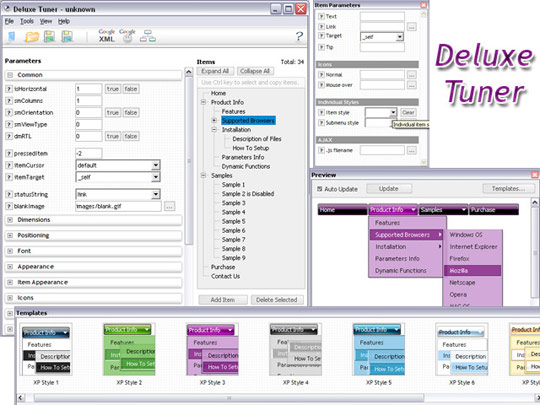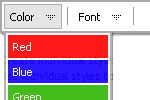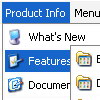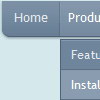Recent Questions
Q: How can I center my navigation java script menu bar within my HTML page? I have tried putting the script into a table that is centered. I have also changed the var menuWidth to 800px. The navigation bar is still right-justified instead of centered in both IE and Firefox/Mozilla.
A: Now you use absolute position for the java script menu bar:
var absolutePos=1;
var posX="0px";
var posY="0px";
You should set:
var absolutePos=0;
Q: I have used your Deluxe-menu on my websit. With the browser Opera I have problems with the dhtml scrolling menu item-color. If I select the menu at the first time, the item color is black. After select a menu item the menu item color is #f0e4cc, this is correct. After re-select the menu the item color is #f0e4cc also. After browser re-start the menu item color is black :-(
A: See it is not correctly to write colors in the following way (without # symbol):
var fontColor=["f0e4cc","f0e4cc"];
You should write:
var fontColor=["#f0e4cc","#f0e4cc"];
Your menu will work correctly in all browsers in that case.
Q: I purchased the right to use deluxe-menu because I liked how it worked versus my old menu which is your competitor (milonic menu) in the javascript driven menu market.
However, after using your menu for a few months, I have discovered a problem. When I bought the menu, the claim was made it worked with all doctypes. I use "strict" on my web site and want my pages to validate as strict with W3C or WDG validators.
I get a notice of incorrect copyright when I remove the link to yoursite in the heading of the document. Since this line does not validate,I feel that you should provide an adequate alternative to having a unsubstantiated line in your html code. I have looked over the FAQ on your site and have found no remedy. You have a wonderful product and I wish to continue to use your menu. But this one little bugaboo surely can be fixed on your end by altering the requirement to keep the incorrect copyright from appearing even though it shouldn't appear in my opinion.
For instance, I can alter the line and make the link invisible.
Example: <noscript><a href="http://deluxe-menu.com"></a></noscript>
By making the link invisible with no text, it will mean nobody would see the blatant ad for your site. The incorrect copyright notice does not appear under those circumstances, however it still does not validate.
I just want to create web pages that validate! Please help me as a struggling web author to achieve my goal and still use your menu which I paid for! Thanks for any help you can give me.
I love my deluxe-menu! Please help to keep using it.
A: Thanks for your interest in our products.
Try to move <noscript> tag into the <body> tag.
Q: Could I create a function that displays thetab that the user clicked in the left tab menu.
These tabs are all within the same window, sothe page will always be the same.
Just need a function to make differenttabs appear.
A: Unfortunately Deluxe Tabs doesn't support API functions now.
You can use the following function to open specific tab:
dtabs_itemClick(menuInd,itemInd);
where
menuInd - index of a tab menu on a page, >= 0.
itemInd - index of a item, >=0.
For example:
<DIV onClick="dtabs_itemClick(0,2)" style="width: 200px; border: 2px solid #000;">Click to open the third tab</DIV>










